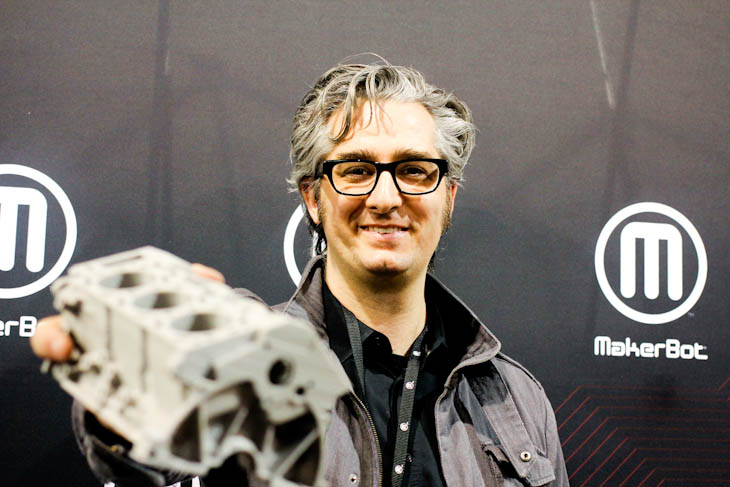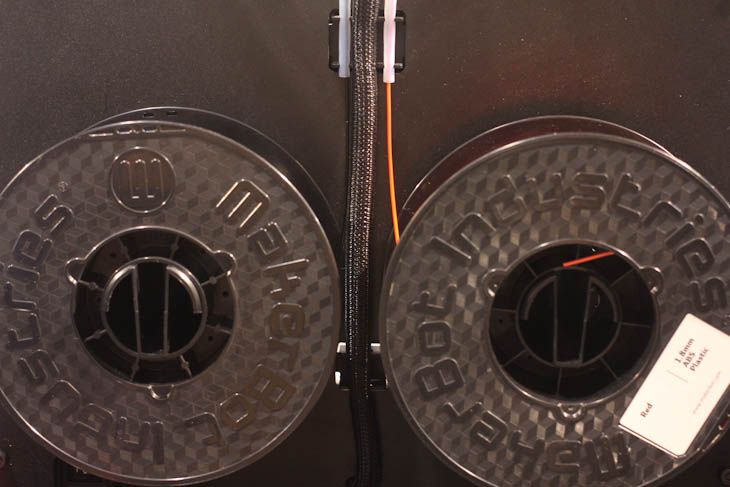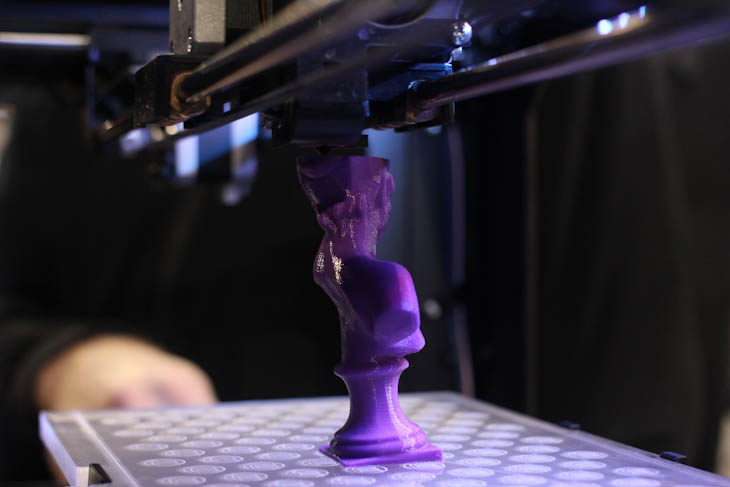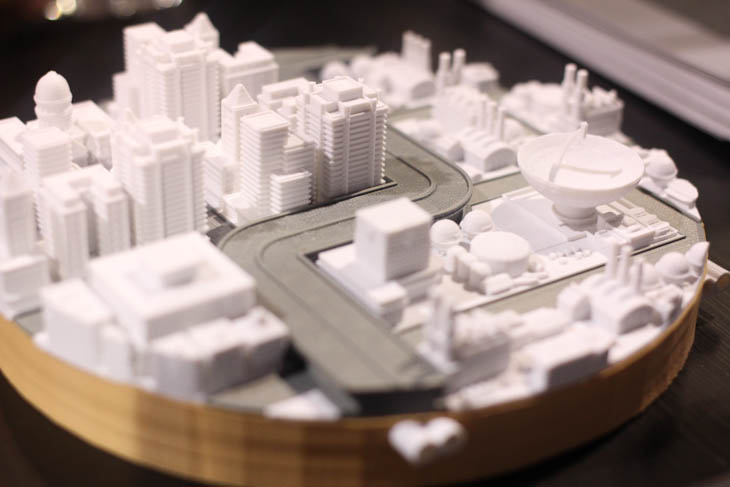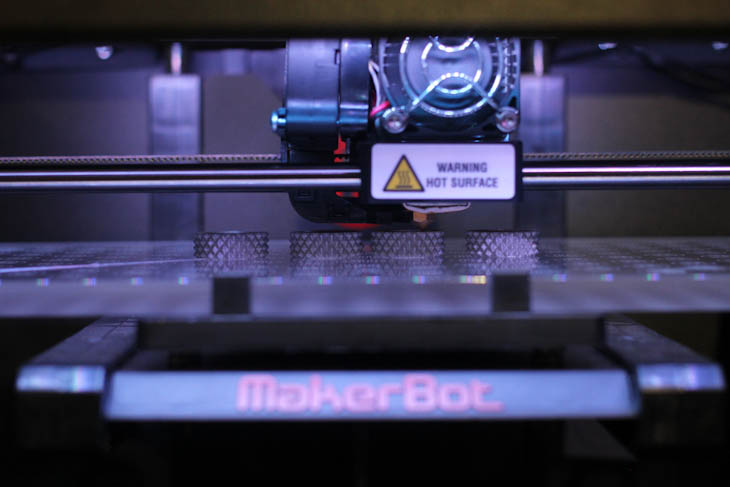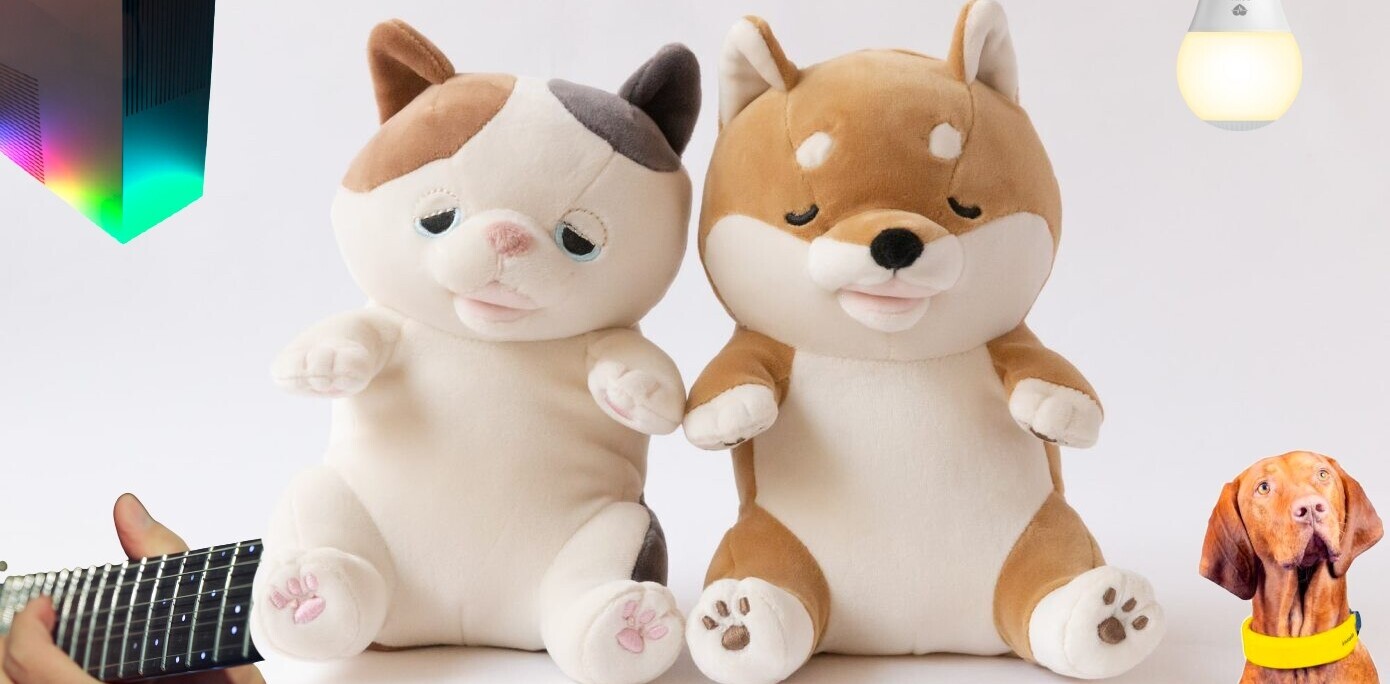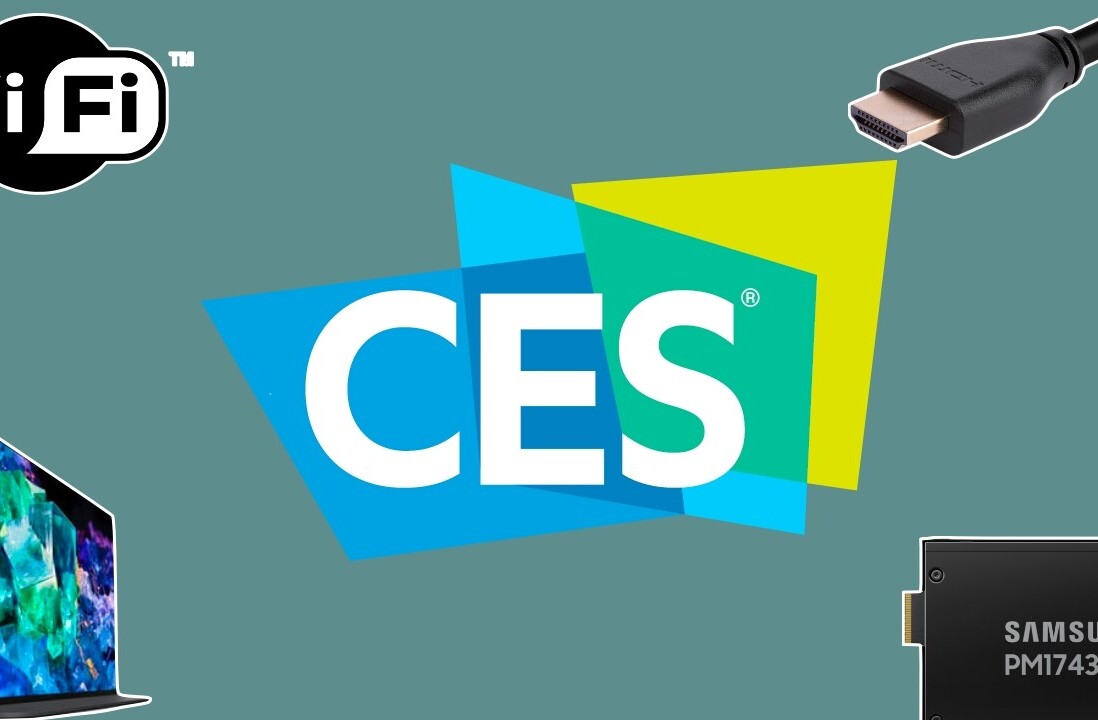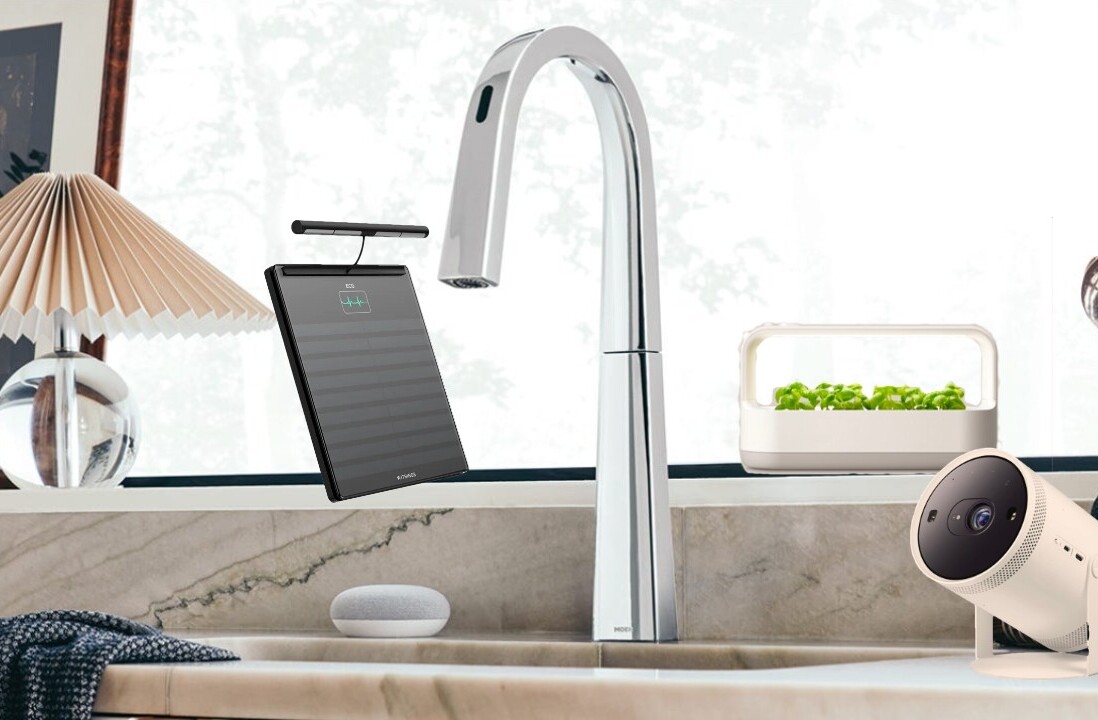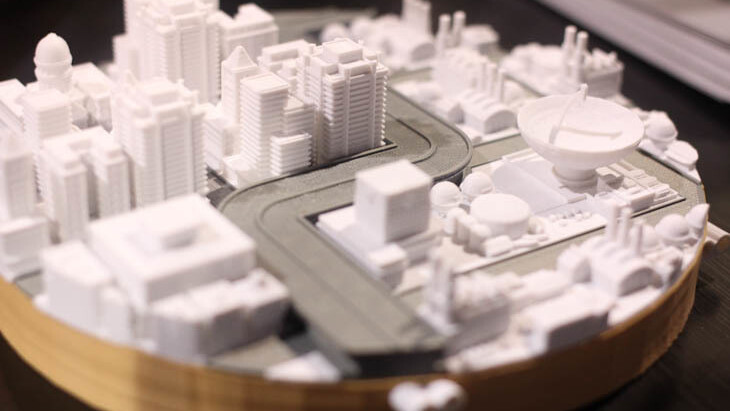
Bre Pettis wants to empower people. And not in an ironic, marketing speak kind of way. It’s immediately evident that there is no cynical disconnect between what he’s saying about Makerbot’s mission and what he believes.
Pettis is the CEO of Makerbot Industries, a Brooklyn, NYC-based company that is essentially in the business of commoditizing the process of rapid prototyping. The machines, the latest of which is the Replicator 2, measure a couple of feet square and consist of a 3D printing head that uses melted polymer filament to craft objects from digital models. If you’ve got a 3D model of it, the Replicator 2 can likely reproduce it.
The process of rapid prototyping came to be a part of the industrial design process in the 80’s, but until very recently required an incredible investment in people and machinery. This meant that engineers or architects would have to get authorization to spend thousands of dollars or more to order a prototype of a device that they were working on (even more in the days before RP). And then, if it was bad, they’d have to explain why and order another one.
“Now,” says Pettis, “they can print one out and if it’s bad they just throw it in the trash before their boss even sees it and print one that’s perfect.”
NASA’s Jet Propulsion Laboratory wants to put one on every engineer’s desk, and at only a couple grand per unit, the costs are infinitesimally smaller than they used to be. And a lot cheaper than having a full-material prototype tooled and manufactured.
Ford, another fan, sent Pettis the engine block you see in his hands above, as a thank you. The model is available on MakerBots’s network for digital objects reproducible on their machines called Thingiverse. And yes, it’s a real engine block for one of their vehicles.
Pettis hands me the block and points out that you can see (something that’s very difficult to do in the real thing) the separate systems for air cooling and oil lubrication honeycombing the assembly. “Watching it get printed is like seeing an x-ray,” he says.
The original MakerBot project started out as a kit. “It was just a big box of parts,” Pettis says, grinning. That obviously appealed to the tinkerers, for whom building the printer was as much of a thrill as operating it.
From there, the first Replicator appealed to hobbyists, those for whom the making is a compulsion, a need that could be served by an affordable and capable prototyping machine.
The latest version, the Replicator 2 (and its 2-color counterpart, the 2X) is expanding the audience to prosumer clients. Architects, engineers, industrial designers, those who need more precision, size and speed. Having the ability to iterate and test a product in meatspace rather than just a model reveals complications and issues much more rapidly.
MakerBot’s latest machine, the Replicator, can be purchased on the site, but Pettis says that they’re continuing to investigate the whole of this market. They’re investing research in filament, the raw material that the Replicator uses to craft. “We want to be involved in the whole thing, soup to nuts,” he says.
“The next industrial revolution,” is what Pettis says that MakerBot is trying to incite. The first brought us machines that allowed for mass production and replication, the next should give us individual control over those machines, rather than it being relegated to the purview of tooling companies and manufacturing complexes.
At its heart, the Replicator 2 is a portal for bringing digital content or ideas into the world of physical things. And now that the machines are getting more affordable and more capable, this portal is more accessible to big ideas.
“Who will be the first video game company to dump their entire library of 3D models onto Thingiverse?”
That’s something that Pettis had been thinking about the morning of our interview. He mentions Portal, Tony Hawk Pro Skater and Duke Nukem. What if those companies were to dump the models into the online database? Users could then print their own figurines. He’s fascinated with the idea that they could teleport those digital creations out, populating our world with their characters.
The MakerBot machines certainly tap into something that’s there in many creatives. The desire to manifest physical things is a gene of sorts that I’ve been able to recognize in artists and creators of all kinds, even if they don’t self-identify that way. But it isn’t just an academic exercise, people are making things that go beyond conceptual design.
The Square Helper, for instance, is an accessory for the Square card reader that stops it from spinning in the headphone jacks of phones. It seems like a simple idea, and it is, but it’s a very real issue for small store owners. Swiping cards is annoying when the dongle is spinning around in the jack.
Rather than turn to China, ordering up thousands of dollars worth of tooling and then even more outlay for stock, the creator has been producing them solely on a MakerBot Replicator. The machine runs about 20 hours a day and he has a webcam set up to watch the progress of the items as they’re printed.
What’s really interesting is that he recently told Pettis that he was going to need to expand production as he was getting too many orders. But he didn’t think ‘oh, hey, I have to go get a manufacturing deal now’, instead, his first thought was ‘I’m going to need another MakerBot’. This shift in thinking is exactly what Pettis is talking about, putting the ability to create final production products directly into the hands of the creators.
Currently, the Replicator only uses one color of filament, though the Replicator 2X, newly announced at CES, can use up to two at once for bicolored products. And that will likely increase as they get more sophisticated.
With Thingiverse and the new MakerBot API, there is also a market for developers to offer apps that people can use to parametrically customize products for ordering. Dial in the shapes you want printed on the back of an iPhone case, for instance, and tweak their size, spacing and more to get something uniquely yours.
Pettis says that the market of creative professionals that products like the Replicator line could appeal to is in the range of 30-40M people. Which is more than enough to support any boutique business that MakerBot cares to maintain.
But just allowing people to exercise their creative demons more directly and streamlining the process of making digital models into physical products is just the mechanics. “We like to take it one level of abstraction higher,” says Pettis, “we want you to take pride in your work, to make you happy.”
Get the TNW newsletter
Get the most important tech news in your inbox each week.

